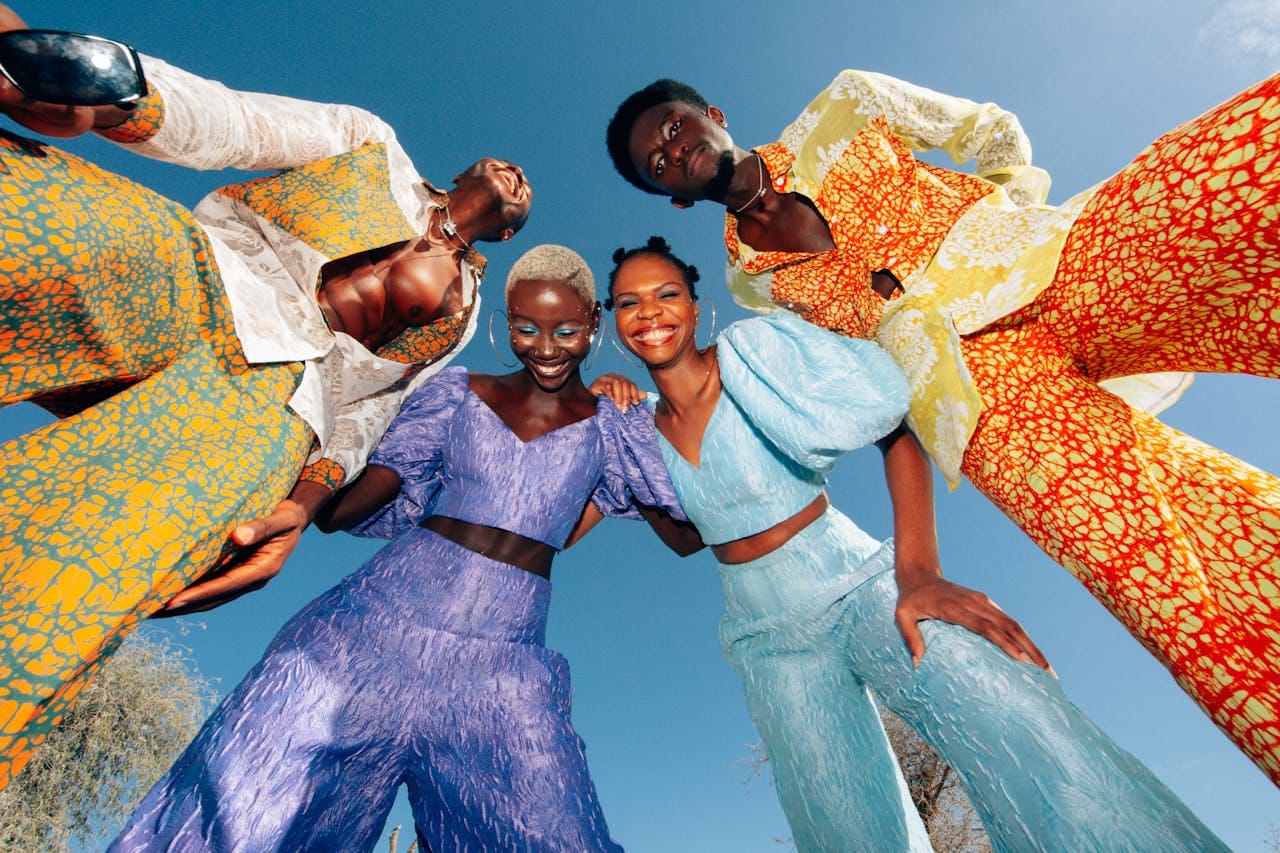CAM 20 TASK 2 (2 PARTS): GLOBAL FASHION STYLES
Many aspects of the way people dress today are influenced by global fashion trends.
How has global fashion become such a strong influence on people’s lives?
Do you think this is a positive or negative development?
Sample Answer
There is an inextricable relationship between individual fashion styles and contemporary global trends, with the latter having a palpable influence on the former. Globalisation and its concomitant outcomes have facilitated the widespread adoption of the world’s fashion, and in my opinion, this phenomenon is, on the whole, a net positive.
Cultural homogenisation brought about by globalisation has underscored the importance of global fashion in the average person’s life. The widespread ubiquity of global offerings in the fashion realm is initiated and accentuated by both conventional and social media. Nowadays, it is not uncommon for TV viewers to see professional news reporters donning smart attire on the BBC’s live broadcasts or members of prominent K-pop bands dominating international stages in designer clothes. These examples of everyday televised personas and their outfits have gradually become the norm, thereby encouraging the universal adoption of fashion styles. Relatedly, social media influencers and Internet personalities often dress up in trendy outfits and attractive accessories to add character and a sense of signature to their content. This can also have a noticeable influence on the way the average person dresses.
I believe this level of influence is, on the whole, advantageous. Modern, global fashion trends are often characterised by their simplicity, practicality, and convenience. A salient example is office attire, which originated from Western parts of the world. Today, professional men and women show up in offices around the world dressed in suits and ties, alongside accessories such as leather watches and shiny cufflinks – formal outfits that exude professionalism, elegance, and customer-friendliness. Compared to traditional costumes or regional attire, global clothing choices are arguably superior in terms of flexibility, functionality, and mobility. Regarding daily clothing choices, worldwide fashion styles highlight versatility and freedom of movement. Polo shirts, hoodies, Oxford shirts, and jeans, for instance, are usually worn in many circumstances, both formal and informal, including casual hangouts with friends, family get-togethers, or even job interviews. Wearers can even dress up or dress down to tailor their styles to specific events if they so desire.
In conclusion, globalisation, accelerated by both mainstream and social media, is responsible for the strong impact global fashion has on people’s lives. This development is positive on the whole, given the characteristics of modern, global clothing items: versatility, simplicity, and flexibility.
Marking by Chat GPT Plus

TỪ VỰNG HAY
Many aspects of the way people dress today are influenced by global fashion trends.
How has global fashion become such a strong influence on people’s lives?
Do you think this is a positive or negative development?
There is an inextricable relationship between individual fashion styles and contemporary global trends, with the latter having a palpable influence on the former. Globalisation and its concomitant outcomes have facilitated the widespread adoption of the world’s fashion, and in my opinion, this phenomenon is, on the whole, a net positive.
Cultural homogenisation brought about by globalisation has underscored the importance of global fashion in the average person’s life. The widespread ubiquity of global offerings in the fashion realm is initiated and accentuated by both conventional and social media. Nowadays, it is not uncommon for TV viewers to see professional news reporters donning smart attire on the BBC’s live broadcasts or members of prominent K-pop bands dominating international stages in designer clothes. These examples of everyday televised personas and their outfits have gradually become the norm, thereby encouraging the universal adoption of fashion styles. Relatedly, social media influencers and Internet personalities often dress up in trendy outfits and attractive accessories to add character and a sense of signature to their content. This can also have a noticeable influence on the way the average person dresses.
I believe this level of influence is, on the whole, advantageous. Modern, global fashion trends are often characterised by their simplicity, practicality, and convenience. A salient example is office attire, which originated from Western parts of the world. Today, professional men and women show up in offices around the world dressed in suits and ties, alongside accessories such as leather watches and shiny cufflinks – formal outfits that exude professionalism, elegance, and customer-friendliness. Compared to traditional costumes or regional attire, global clothing choices are arguably superior in terms of flexibility, functionality, and mobility. Regarding daily clothing choices, worldwide fashion styles highlight versatility and freedom of movement. Polo shirts, hoodies, Oxford shirts, and jeans, for instance, are usually worn in many circumstances, both formal and informal, including casual hangouts with friends, family get-togethers, or even job interviews. Wearers can even dress up or dress down to tailor their styles to specific events if they so desire.
In conclusion, globalisation, accelerated by both mainstream media and social media, is responsible for the strong impact global fashion has on people’s lives. This development is positive on the whole, given the characteristics of modern, global clothing items: versatility, simplicity, and flexibility.
Vocabulary
- inextricable relationship – mối quan hệ không thể tách rời
- contemporary global trends – xu hướng toàn cầu đương đại
- palpable influence – ảnh hưởng rõ rệt
- widespread adoption – sự áp dụng rộng rãi
- net positive – lợi ích ròng
- cultural homogenisation – sự đồng nhất văn hoá
- widespread ubiquity – sự phổ biến khắp nơi
- smart attire – trang phục lịch sự
- live broadcasts – chương trình phát sóng trực tiếp
- designer clothes – quần áo hàng hiệu
- universal adoption – sự chấp nhận rộng khắp
- social media influencers – người có ảnh hưởng trên mạng xã hội
- Internet personalities – nhân vật nổi bật trên Internet
- noticeable influence – ảnh hưởng rõ ràng
- salient example – ví dụ nổi bật
- exude professionalism – toát lên sự chuyên nghiệp
- traditional costumes – trang phục truyền thống
- freedom of movement – sự tự do di chuyển
- dress up or dress down – ăn mặc sang trọng hoặc giản dị
- mainstream media – truyền thông chính thống
✔ DÀN Ý
Mở bài:
- Thời trang cá nhân và xu hướng toàn cầu có liên hệ chặt chẽ.
- Toàn cầu hoá khiến thời trang toàn cầu lan rộng.
- Ý kiến: Đây là một hiện tượng tích cực.
Thân bài 1: Thời trang toàn cầu ảnh hưởng mạnh mẽ tới đời sống hàng ngày
- Toàn cầu hoá làm các phong cách thời trang phổ biến rộng khắp.
- Truyền thông & mạng xã hội là yếu tố chính giúp lan truyền xu hướng.
- Ví dụ 1: Phát thanh viên BBC mặc đồ công sở trên truyền hình.
- Ví dụ 2: Các nhóm nhạc K-pop mặc đồ hàng hiệu trên sân khấu.
- Ví dụ 3: Influencer ăn mặc hợp mốt để tạo dấu ấn cá nhân => người xem bắt chước.
Thân bài 2: Ảnh hưởng này là tích cực
- Thời trang toàn cầu thường đơn giản, thực tế, tiện lợi.
- Ví dụ 1: Trang phục công sở phương Tây (suit, cà vạt, đồng hồ da, cufflink) => thể hiện sự chuyên nghiệp.
- So với trang phục truyền thống, đồ toàn cầu linh hoạt hơn, dễ vận động.
- Ví dụ 2: Quần jean, áo hoodie, sơ mi oxford mặc được trong nhiều dịp (gặp bạn, phỏng vấn, đi chơi…).
- Người mặc có thể “dress up” hay “dress down” tùy hoàn cảnh.
Kết bài:
- Truyền thông giúp thời trang toàn cầu có ảnh hưởng mạnh mẽ.
- Ảnh hưởng này nhìn chung là tích cực vì các đặc điểm như: linh hoạt, đơn giản, dễ thích nghi.


